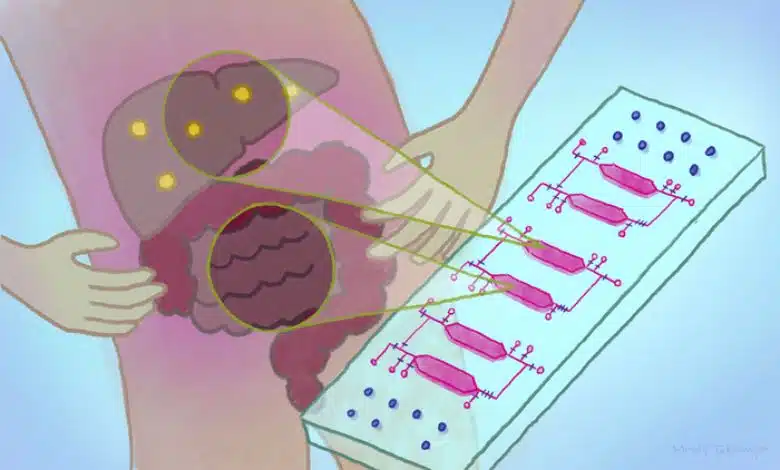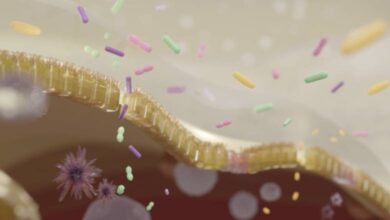
Advancing NAFLD Research with Kyoto University’s iGLC Platform
The Institute for Integrated Cell-Material Sciences (iCeMS) at Kyoto University achieved a remarkable breakthrough in studying non-alcoholic fatty liver disease (NAFLD). iCeMS scientists developed an advanced platform, the integrated-gut-liver-on-a-chip (iGLC), with the potential to revolutionize NAFLD research. The esteemed journal Communications Biology published the innovative findings.
Understanding the Complexities of NAFLD
NAFLD is a complex condition that affects a significant percentage of the population. However, researchers have not established any effective treatments because of the wide range of interactions inside and between the gut and liver. NAFLD involves the accumulation of fat inside the liver, which can become severe and, in some cases, requires liver transplantation. Hence, scientists need better approaches to study the condition to find improved treatment options.
The Challenge of Modeling Interactions Using Animals
Modeling the interactions between the gut and liver in animals like mice is challenging due to the many differences between species. Thus, scientists need to develop new techniques to study these interactions better.
Introducing the iGLC Platform
The iGLC platform comprises interconnected chambers that hold different cell types, allowing scientists to study the interactions between organs. Although this is not the first gut-liver platform, the iGLC platform overcomes some of the issues encountered in previous attempts.
How the iGLC Platform Works
The scientists placed cells from a liver cancer cell line and a gut cancer cell line into separate chambers. The chambers are connected by tiny fluidic channels with strategically positioned valves that can be opened and closed. The platform also includes a pump for pushing fluid between the chambers. A fluid medium can pass through both chambers while keeping the cells separate, mimicking the circulation between the gut and liver in the human body. The scientists can also introduce new substances into the platform to test their impacts on the two organs.
PDMS Material Coating
The iGLC platform uses polydimethylsiloxane (PDMS), a silicone material that is coated with two other substances. One substance prevents the chip from absorbing fatty molecules that could affect experiments, and the other substance increases cell growth.
Promising Results
The scientists observed significant changes in gene expression in gut and liver cells when cultured in the iGLC platform when compared to the same cells cultured on their own. They also documented the specific changes that happened in the cells when free fatty acids were introduced for one or seven days. The introduction of free fatty acids for one day led to DNA damage inside the cells, while seven days of circulating free fatty acids led to their accumulation in the cells, resulting in cell death, similar to severe cases of NAFLD.
Next Steps
The iGLC platform has some limitations, such as not taking into account the impacts of gut microbes or other factors on the gut-liver-axis. The experiments also used cancer cell lines, which don’t represent the full diversity or functionality of cells in living human tissue. Nonetheless, the iGLC platform is a significant step forward. The researchers plan to use liver and gut organoids derived from human stem cells to investigate NAFLD under precisely controlled conditions that more closely mimic patients’ physiological contexts.
Conclusion
The iGLC platform shows great promise in the study of NAFLD and the interactions between the gut and liver. The disease can be studied more efficiently and cost-effectively through the use of advanced materials in the innovative design of this reliable platform for researchers.. The next steps in using organoids derived from human stem cells could open up a new era of research and insights into NAFLD and related conditions.





